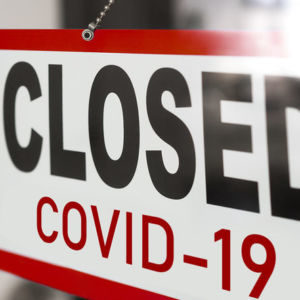Pennsylvania’s workforce is experiencing the second-quickest recovery in the country, according to a an analysis by WalletHub.
Pennsylvania’s 24.62 percent increase in unemployment insurance claims year to year is the third-lowest in the U.S., they report. While that number appears high, in the context of a COVID-caused economic crisis that’s wiped out all the job gains since the Great Recession, it’s relatively good news.
“Basically, the states with the highest recovery are those that have had the biggest decreases in the number of unemployment claims filed over a certain period of time,” Diana Polk, communications manager with WalletHub told Delaware Valley Journal. Data was collected from the U.S. Department of Labor.
Since the start of the pandemic, the commonwealth has had the eighth-fastest jobs recovery in the U.S. From March 2020 to present day, the total number of unemployment insurance claims in Pennsylvania increased more than 500 percent year-over-year. Again, while that number is incredibly high, it ranks well when compared to other states who had 700 or 800 percent increases in the total number of unemployment claims.
Despite the quick claim recovery, nearly 400,000 Pennsylvanians applied for either unemployment compensation benefits or pandemic unemployment assistance in the first part of January.
On Dec. 22, 2020, Congress passed a second $900 billion stimulus package, funneling cash into the economy to help stimulate businesses. According to Paul Harrington, a professor of labor markets and policy at Drexel University, the newest relief package may not be sufficient enough to fully stimulate the economy.
“In certain ways, another round of stimulus won’t help much unless the economy is opened up quickly and production is resumed,” Harrington said. “For a short period of time, stimulus can keep economic activity at a life support level for a few months, but we cannot go on for very long priming the pump and then telling firms they cannot produce to meet stimulus-based demand.”
The unemployment insurance recovery rate is a ratio of claims recovered to claims established. Some experts are concerned with the heavy focus on this number, as it does not account for those who do not have access to unemployment insurance or those with longtime unemployment insurance claims. This also includes part-time workers.
“Somehow we assumed that all workers sidelined by COVID would have access to unemployment insurance,” said Katrinell Davis, an associate professor of sociology and African American studies at the University of Florida.
Davis says it is important to discuss the unemployed and uninsured as these groups are often left without safety nets, especially in lieu of the Covid-19 pandemic.
“They make up a big percentage of the American workforce, and in some industries, they make up a significant majority. Despite what is known about workers and the real conditions they face, minimal efforts have been made to ensure their capacity to make ends meet during this unprecedented time,” Davis said.

